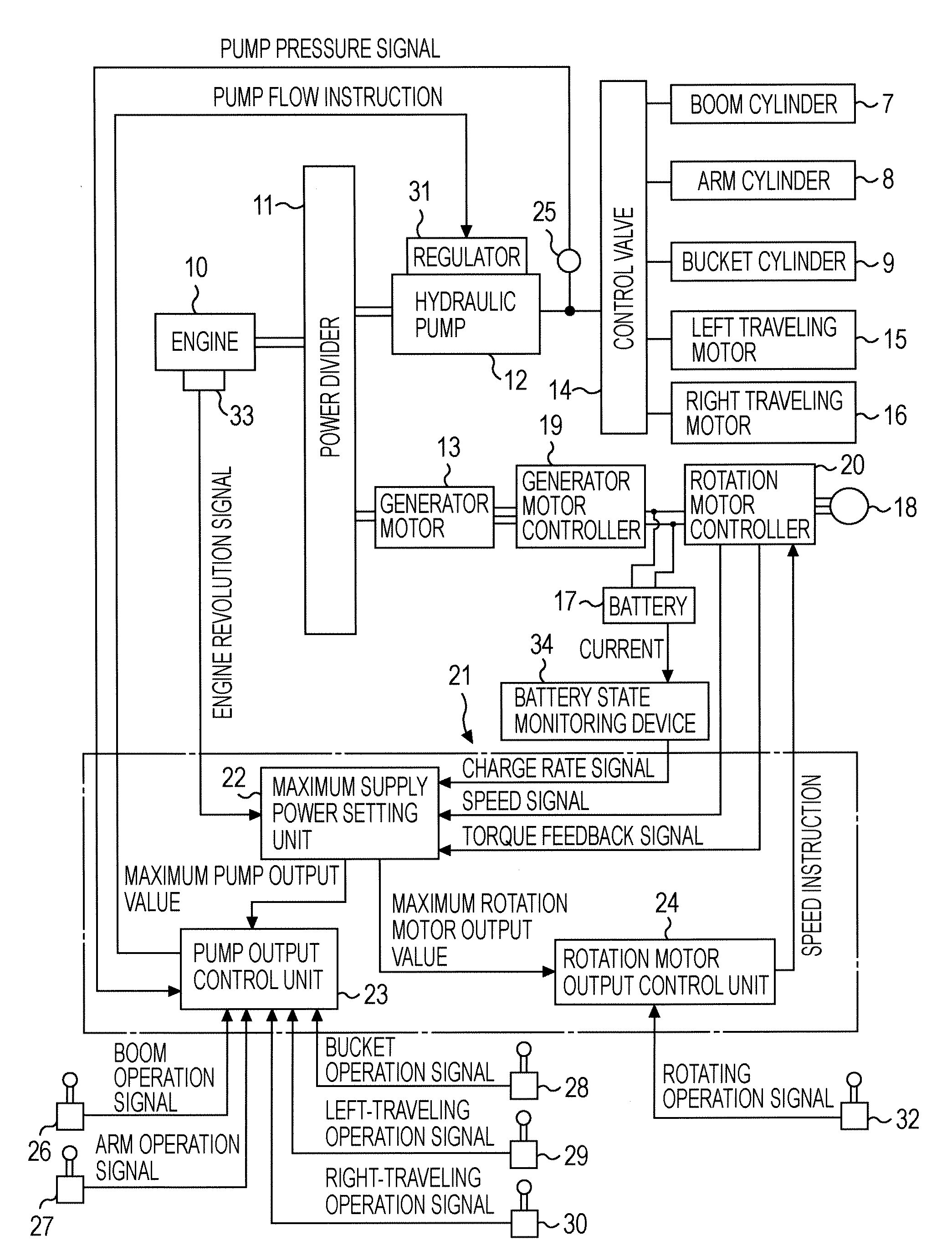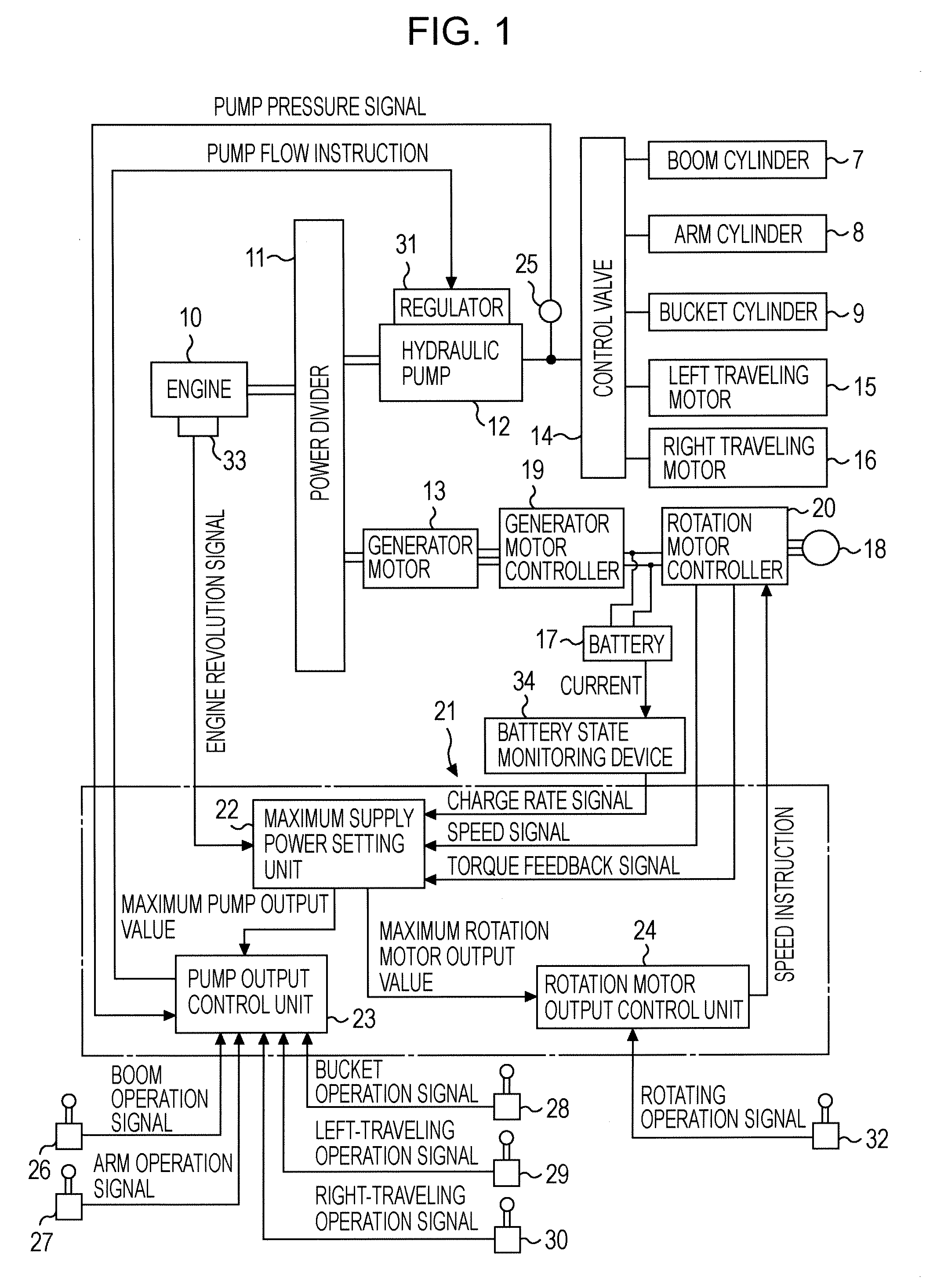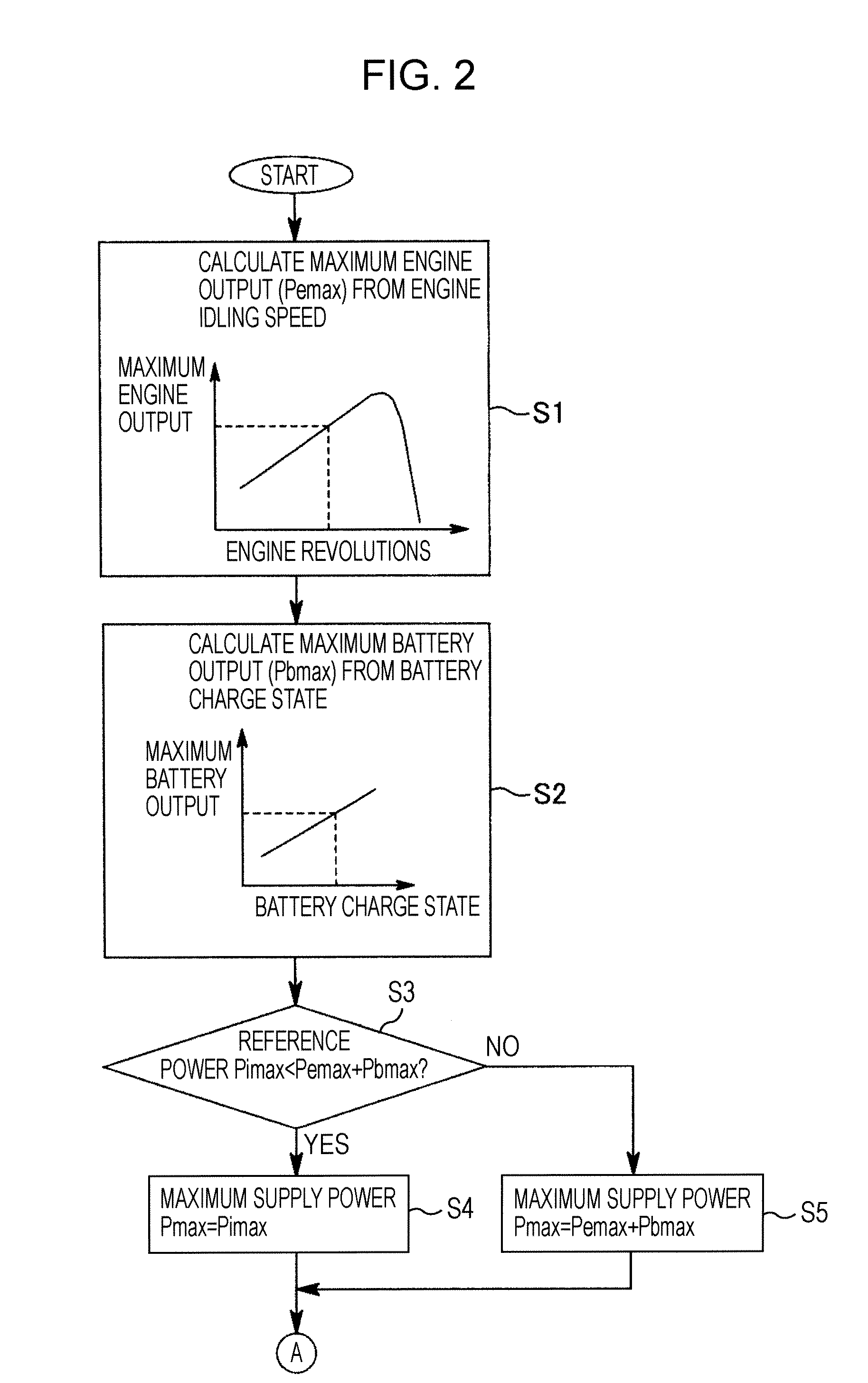Hybrid construction machine
a construction machine and hybrid technology, applied in the direction of battery/cell propulsion, fluid coupling, coupling, etc., can solve the problems of inability to operate the hybrid excavater, difficulty in adjusting the operating position, and inability to adjust the operating position, so as to achieve similar operating capabilities and sacrifice the effect of operability
- Summary
- Abstract
- Description
- Claims
- Application Information
AI Technical Summary
Benefits of technology
Problems solved by technology
Method used
Image
Examples
first embodiment (see fig.1 to fig.4)
First Embodiment (see FIG. 1 to FIG. 4)
[0037]FIG. 1 is a block diagram of a hybrid excavator according to the present embodiment. As illustrated in FIG. 1, a hydraulic pump 12 and a generator motor 13 which serves both a generator function and a motor function are connected in parallel through a power divider 11 to an engine 10. The hydraulic pump 12 and the generator motor 13 are driven by the engine 10. A plurality of hydraulic actuators is connected through a control valve 14 to the hydraulic pump 12. The control valve 14, which is illustrated as a single entity in FIG. 1, represents a plurality of control valves for the respective hydraulic actuators. The hydraulic actuators include a boom cylinder 7, an arm cylinder 8, a bucket cylinder 9 (equivalent to the cylinders 7, 8, and 9 of FIG. 8), a left traveling motor 15, and a right traveling motor 16. These hydraulic actuators 7, 8, 9, 15, and 16 are driven by pressure oil supplied from the hydraulic pump 12. While FIG. 1 illustra...
second embodiment (see fig.5 and fig.6)
Second Embodiment (see FIG. 5 and FIG. 6)
[0056]A block configuration of the second embodiment is the same as that of the first embodiment, and thus an illustration thereof is omitted.
[0057]FIG. 5 and FIG. 6 are flowcharts illustrating operation of the second embodiment. Steps S11 to S15 of FIG. 5 are the same as steps S1 to S5 of FIG. 2. In the second embodiment, step S16 and step S17 are performed simultaneously with routines of steps S11 to S15. In step S16, a hydraulic pump tilt calculation value qtmp (cc / rev) under normal control is calculated from hydraulic actuator operation signals, pump pressure, and the like (corresponding to step S9 of FIG. 3). In step S17, a speed instruction value Ns under normal control is calculated from a rotating operation signal and the like.
[0058]Subsequently, in step S18 of FIG. 6, on the basis of the amount of operation of each actuator, a ratio between the sum of the amounts of operation of the hydraulic actuators and the amount of operation of ...
third embodiment (see fig.7)
Third Embodiment (see FIG. 7)
[0061]In the third embodiment of the present invention, a maximum hydraulic pump output and a maximum rotation motor output are determined according to an operation pattern, not according to the amount of operation. Hereinafter, only differences from the second embodiment will be described with reference to FIG. 5 and FIG. 6.
[0062]After steps S11 to S17 of FIG. 5, in a step corresponding to step S18 of FIG. 6, a maximum hydraulic pump output and a maximum rotation motor output are determined on the basis of a hydraulic pump output power ratio Rp and a rotation motor output power ratio Rs which are preset, as shown in FIG. 7, in relation to operation patterns of the actuators.
[0063]For example, in operation pattern 9 in FIG. 7, if boom operation, arm operation, and rotating operation are simultaneously performed, the hydraulic pump output power ratio Rp and the rotation motor output power ratio Rs are 67% (2 / 3) and 33% (1 / 3), respectively. According to th...
PUM
 Login to View More
Login to View More Abstract
Description
Claims
Application Information
 Login to View More
Login to View More - R&D
- Intellectual Property
- Life Sciences
- Materials
- Tech Scout
- Unparalleled Data Quality
- Higher Quality Content
- 60% Fewer Hallucinations
Browse by: Latest US Patents, China's latest patents, Technical Efficacy Thesaurus, Application Domain, Technology Topic, Popular Technical Reports.
© 2025 PatSnap. All rights reserved.Legal|Privacy policy|Modern Slavery Act Transparency Statement|Sitemap|About US| Contact US: help@patsnap.com



